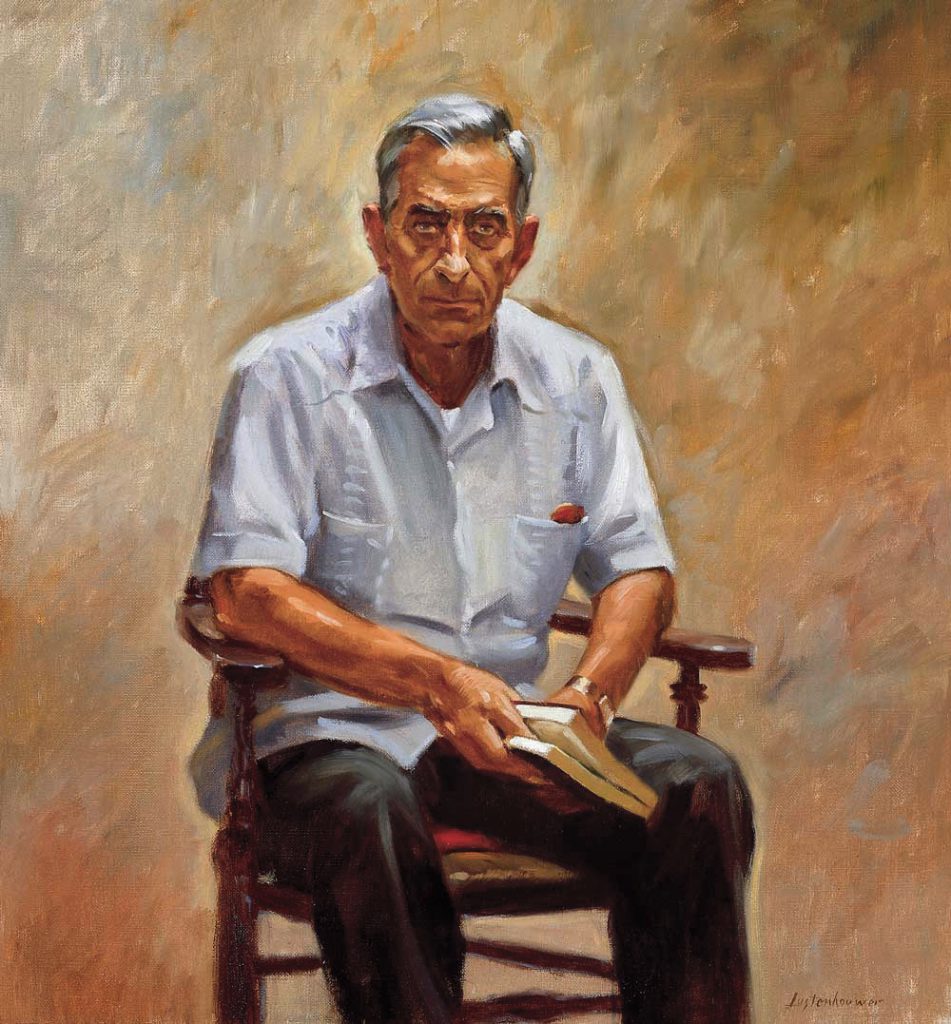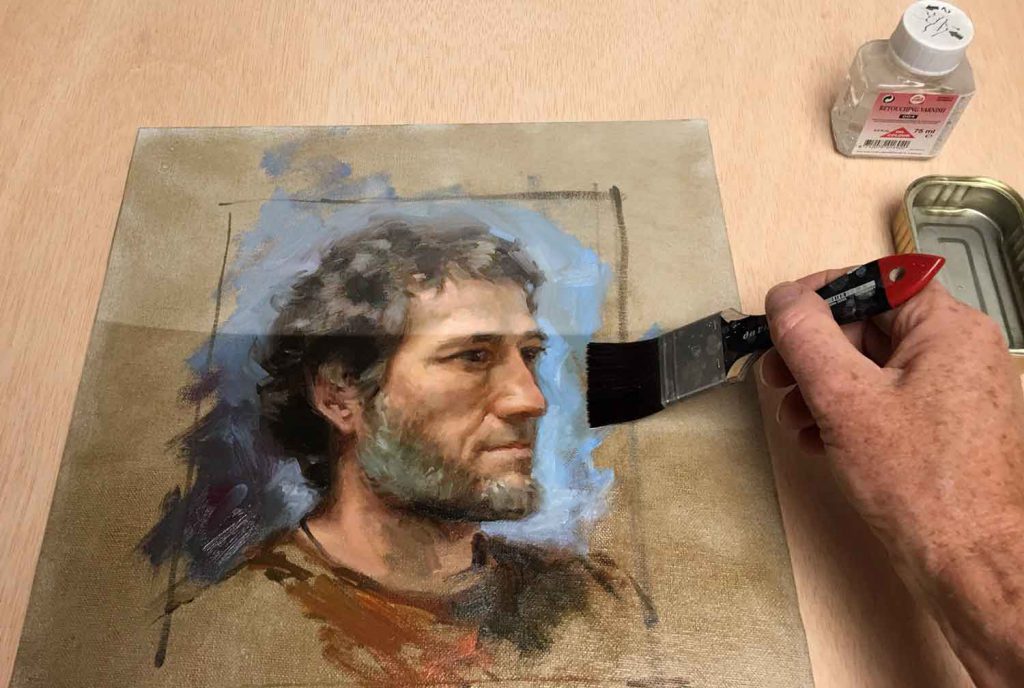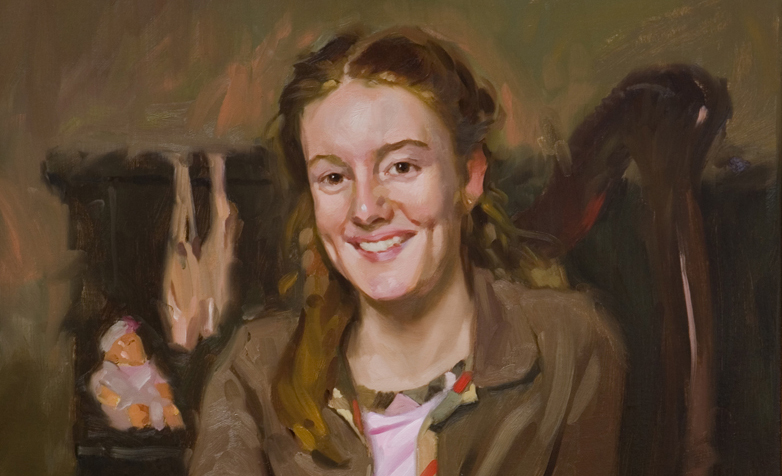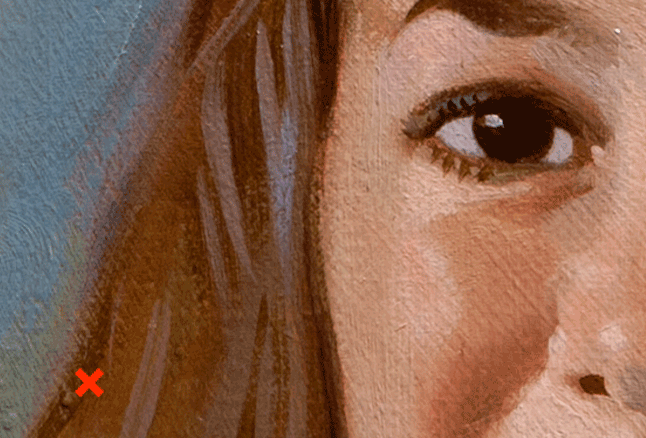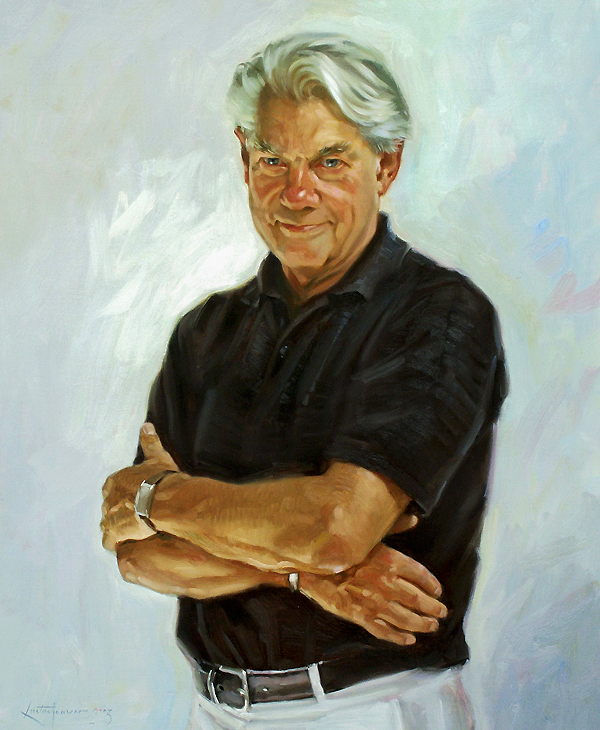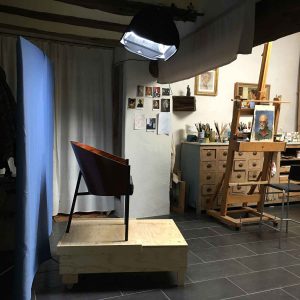I’m often criticized because I explain how to paint a portrait from photography. Working from life is the only true religion, I always hear. I never answer because I know how things are in my profession. I say it again loud and clear: almost all my colleagues use photography when it comes to a commission. Only, they would rather keep silence in public. Anyway, I do not want to talk about that.
What’s one of the hazards of working from photography?
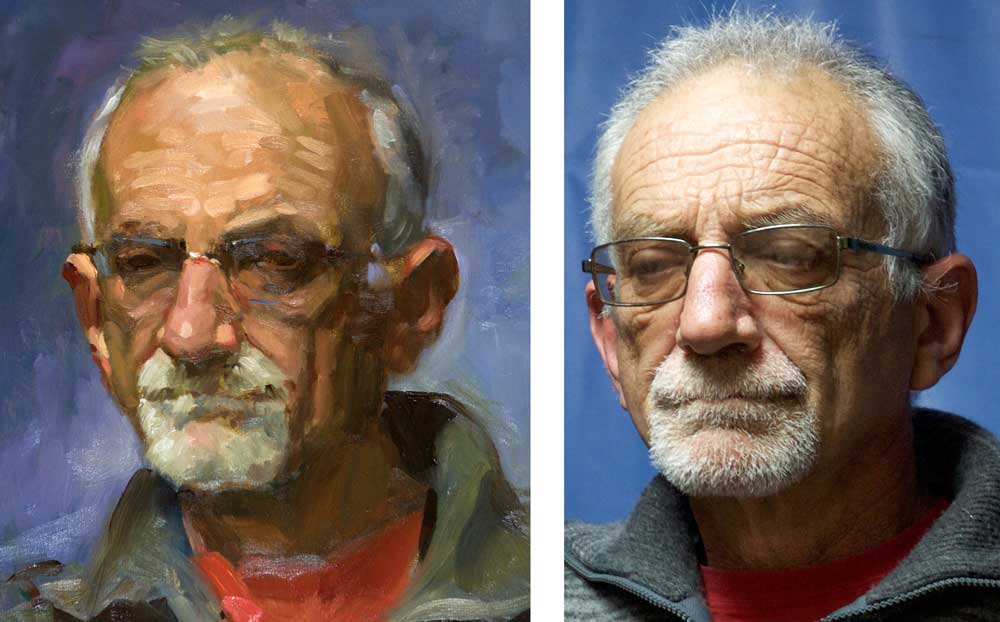
The exposure. The lefthand picture shows a portrait that I painted from life in my studio during our Tuesday sessions. I always take a picture of the model before we stop. That shot you see on the right. A major handicap in photography can be seen at a glance. The light-dark contrast is too big. In particular, the light parts suffer from the loss of the subtle nuances. I notice in my classes that many people overlook that phenomenon. So make sure that the print that you’re working from is not too light and that there is difference between the light and the high-lights.
Finally: of course work from life. Study as much as possible with a live model in front of you. The more training in direct perception the more your work from photography improves.
More posts on working from photography:
More posts on painting from life model:


